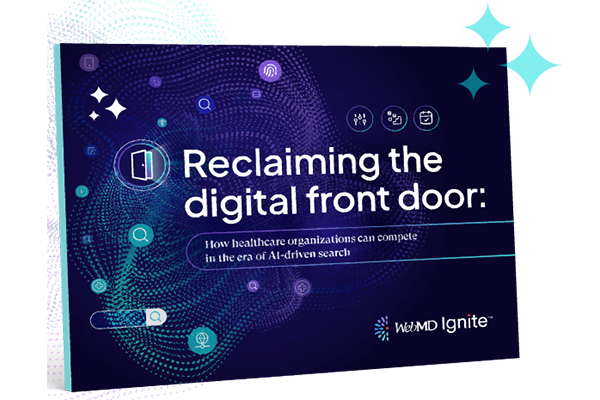A Deeper Look at Minority Health Disparities
April is National Minority Health Month, a time to reflect on how and why stark health disparities persist for ethnic and racial minorities.
The data is clear and the facts are unequivocal. Health outcomes just aren’t equitable for all Americans. There are higher rates of uninsurance among people of color and marginalized groups.1 Black Americans have a life expectancy that’s four years lower than white Americans.2 Over 50% of Hispanic Americans cite high-risk occupations as the leading factor in health disparities for Hispanic people.3 And, in a more general sense, people of color are often at greater risk for poor health outcomes in everything from pregnancy-related mortality to alcohol-induced deaths.4
SDOH and Beyond
The analysis for why health disparities exist often focuses on a fairly straightforward idea: social determinants of health (SDOH). Essentially, non-medical factors like socioeconomic, geographic, and health literacy imbalances between ethnic and racial groups.4 Because certain ethnic and racial minorities are overrepresented in lower socioeconomic categories, it might be assumed that a lack of resources is the reason why health outcomes vary so distinctly.4
There’s no doubt that SDOH factors are essential to any understanding of these disparities. But research shows that it’s an even more complex issue than just budget and access. In fact, health disparities sometimes worsen with higher socioeconomic status. For instance, the racial differences when it comes to infant mortality can grow wider for Black Americans with higher levels of income and education.5 Some studies have also shown similar discrepancies related to major diseases, including stroke, cancer, and heart disease.5
The causes are complex
The truth is, there isn’t just one cause when it comes to health disparities between racial and ethnic groups. The divergences in health outcomes result from an intricate web of structural issues and unconscious biases that are deeply embedded in American society. Think of the concept of “John Henryism,” which refers to the fable of a Black railroad worker who fights to build a tunnel faster than a steam powered machine but dies from exhaustion.6 As it relates to health, this suggests that while someone might be successful financially, the intense effort to achieve that success may cost them their mental, physical and emotional well-being.6
Day-to-day disparities
There are other reasons as well. Take the ‘Pulse Ox Paradox,’ which centers on technology that shows us how much oxygen is in our blood.7 A pulse oximeter works by shining red and infrared light through your skin. Studies have recently shown that pigment in the skin can affect accuracy in the reading.7 The FDA released a safety warning in 2021 related to this, but the larger problem of how to correct it remains.7
No easy fix
There’s no quick fix for a problem this pervasive, but there are paths forward. Studies show that when Black newborns receive care from Black physicians, the mortality deficit they suffer versus white newborns is reduced by half.8 And while only around 5.7% of physicians in the US are Black,9 the number of Black first-year students at medical schools is increasing.10 That can’t rectify the vast disparities overnight, but there are long term efforts to make up for the gap. One example is an initiative at the HBCU Morehouse’s School of Medicine. There, $100 million is being spent over a 10-year period to train more Black doctors.11
Trust matters
This National Minority Health Month, it’s important to understand that we all have a role to play in improving health outcomes for ethnic and racial minorities. It’s up to us to foster an environment of culturally competent care. One that respects diverse linguistic, cultural, and behavioral differences.
Patient education that is inclusive and sensitive to biases has a huge role to play in bettering quality of care.12 An atmosphere of trust can improve the doctor-patient relationship, and that includes encouraging patients to communicate their needs, ask questions, and share their feedback and experience.13
REFERENCES
- https://www.kff.org/racial-equity-and-health-policy/issue-brief/health-coverage-by-race-and-ethnicity/#:~:text=Coverage%20by%20Race%20and%20Ethnicity%20as%20of%202022&text=(Figure%202).-,Nonelderly%20AIAN%20and%20Hispanic%20people%20had%20the%20highest%20uninsured%20rates,their%20White%20counterparts%20(6.6%25)
- https://www.kff.org/racial-equity-and-health-policy/issue-brief/what-is-driving-widening-racial-disparities-in-life-expectancy/
- https://www.pewresearch.org/science/2022/06/14/hispanic-americans-experiences-with-health-care/
- https://www.kff.org/racial-equity-and-health-policy/issue-brief/disparities-in-health-and-health-care-5-key-question-and-answers/
- https://equitablegrowth.org/post-racial-rhetoric-racial-health-disparities-and-health-disparity-consequences-of-stigma-stress-and-racism/
- https://www.ncbi.nlm.nih.gov/pmc/articles/PMC8370445/
- https://webmdignite.com/blog/pulse-ox-paradox
- https://www.ncbi.nlm.nih.gov/pmc/articles/PMC7474610/
- https://www.nmanet.org/news/632592/Only-5.7-of-US-doctors-are-Black-and-experts-warn-the-shortage-harms-public-health.htm
- https://www.aamc.org/news/press-releases/medical-school-enrollment-more-diverse-2021#:~:text=Diversity%20of%20the%202021%20entering%20medical%20school%20class&text=The%20number%20of%20Black%20or,up%20from%209.5%25%20last%20year
- https://www.prnewswire.com/news-releases/historically-black-medical-school-partners-with-national-health-system-to-train-more-black-physicians-301193858.html
- https://www.ncbi.nlm.nih.gov/pmc/articles/PMC8827216/
- https://www.ncbi.nlm.nih.gov/pmc/articles/PMC7800756/





